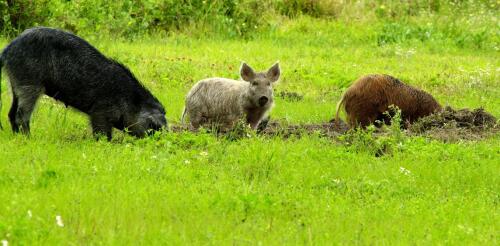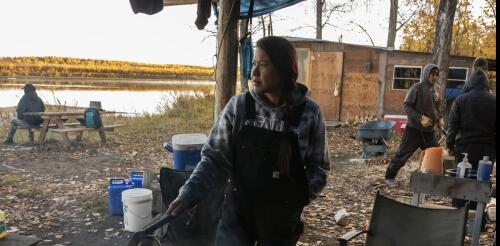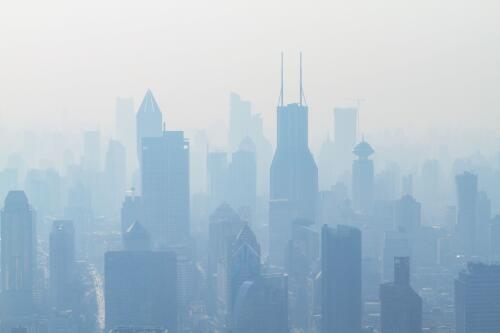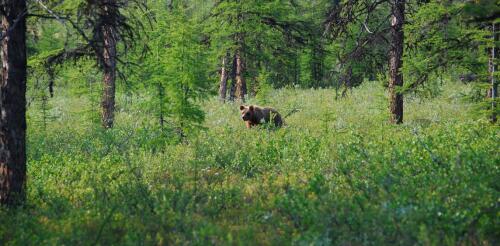Canada
They go by many names – pigs, hogs, swine, razorbacks – but whatever you call them, wild pigs (Sus scrofa) are one of the most damaging invasive species in North America. They cause millions of dollars in crop damage yearly and harbor dozens of pathogens that threaten humans and pets, as well as meat production systems. Although wild pigs have been present in North America for centuries, their populations have rapidly expanded over the past several decades. Recent studies estimate that since the 1980s the wild pig population in the United States has nearly tripled and expanded from 18 to 35 states. More recently, they have spread rapidly across Canada, and these populations are threatening to invade the U.S. from the north. The wild pigs in Canada are unique because they were originally crossbred by humans to be larger and more cold-hardy than their feral cousins to the south. This suite of traits has earned them the name “super pigs” for good reason. Adu...
The year 2023 shattered the record for the warmest summer in the Arctic, and people and ecosystems across the region felt the impact. Wildfires forced evacuations across Canada. Greenland was so warm that a research station at the ice sheet summit recorded melting in late June, only its fifth melting event on record. Sea surface temperatures in the Barents, Kara, Laptev and Beaufort seas were 9 to 12 degrees Fahrenheit (5 to 7 degrees Celsius) above normal in August. While reliable instrument measurements go back only to around 1900, it’s almost certain this was the Arctic’s hottest summer in centuries. Summer heat extremes in 2023 and over time. NOAA, Arctic Report Card 2023 The year started out unusually wet, and snow accumulation during the winter of 2022-23 was above average across much the Arctic. But by May, high spring temperatures had left the North American snowpack at a recor...
Canada’s air pollution levels last year were worse than those in the United States for the first time since an air quality firm in Switzerland started publishing its assessments in 2018. The sixth World Air Quality report published Tuesday by Goldach, Switzerland-based IQAir says raging wildfires were a major influence on Canada’s drop in air quality in 2023, The Canadian Press reports. While the report found Canada on average still has some of the least polluted air, public health experts have repeatedly warned about the health dangers of more intense wildfire seasons, fuelled by human-caused climate change. “Air pollution is a silent killer,” said Dr. Samantha Green, a family physician with Unity Health Toronto and associate professor at the University of Toronto who was not involved with the report. “It’s a problem that I think we’re not used to thinking about, but that we need to be thinking about more.R...
Earth’s boreal forests circle our planet’s far northern reaches, just south of the Arctic’s treeless tundra. If the planet wears an Arctic ice cap, then the boreal forests are a loose-knit headband wrapped around its ears, covering large portions of Alaska, Canada, Scandinavia and Siberia. The boreal region’s soils have long buffered the planet against warming by storing huge quantities of carbon and keeping it out of the atmosphere. Its remoteness has historically protected its forests and wetlands from extensive human impact. These two traits rank boreal forests among the most important ecosystems on Earth. In addition, numerous species of mammals, fish, plants, insects and birds make these forests home. For over two centuries, scientists have recognized that climate plays a key role in determining the geographic zones of plant communities. Because boreal forests and soils face subzero winters and short summers, these forests and the animals that li...
As the eastern U.S. and Canada reeled from days of thick wildfire smoke in early June 2023, millions of people faced the reality of climate change for the first time. Shocking images of New York under apocalyptic orange skies left many people glued to air quality indices and wondering whether it was safe to go outside. What they might not realize is that the air many of them breathe isn’t healthy even when wildfire smoke isn’t filling the sky. In fact, the air that 99% of the world’s population breathes is not safe, according to the World Health Organization. Air pollution is everywhere, in cities and in the countryside, visible and invisible. It kills an estimated 7 million to 10 million people a year, taking 2.2 years off global average life expectancy. Worldwide, that’s a combined 17 billion life years. There is growing evidence that even low levels of air pollutants damage the human body, increasing the risk of cardiovascular and respiratory illness...




